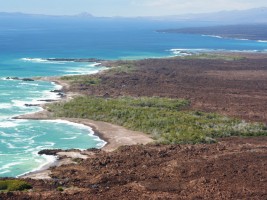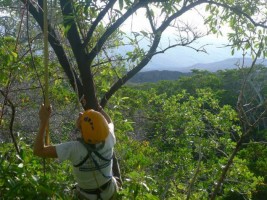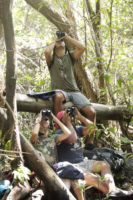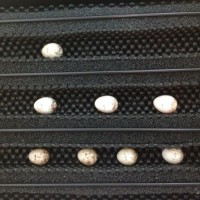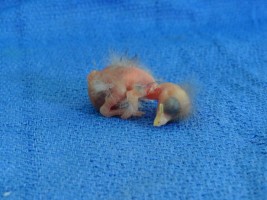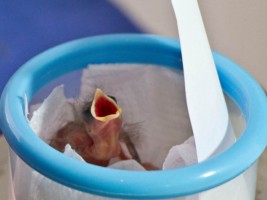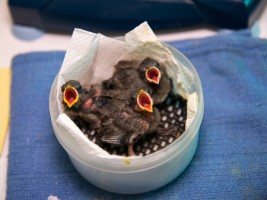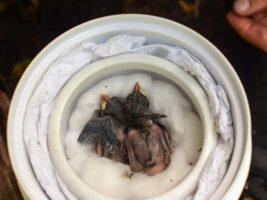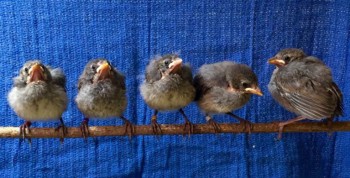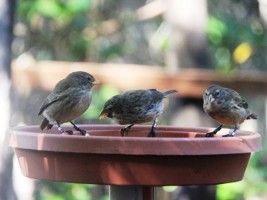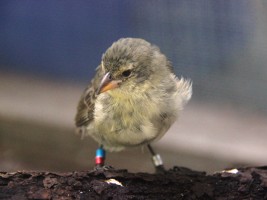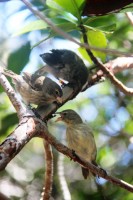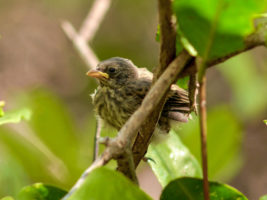Conservation of the Critically Endangered mangrove finch (Camarhynchus heliobates) in the Galapagos Islands
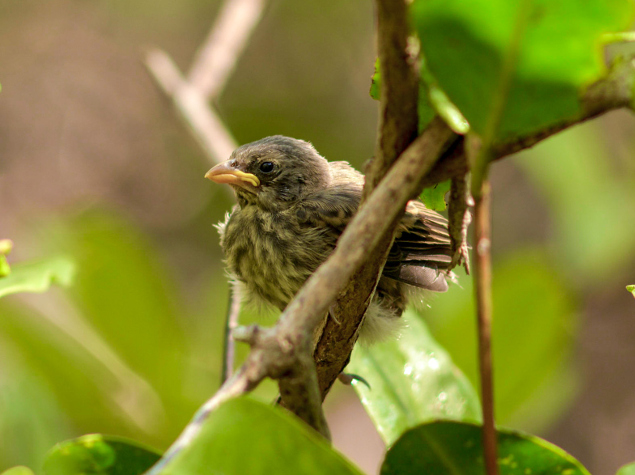
Once distributed extensively throughout mangroves on the two western islands of Galapagos, following extensive population reductions since the early 1900s, the mangrove finch is now restricted to only 30 hectares on north west Isabela Island (at Playa Tortuga Negra and Caleta Black). The population is estimated at only 100 individuals and there are fewer than 20 breeding pairs. Without conservation intervention, mangrove finch nesting success is extremely low due to high nestling mortality as a result of introduced species.
The main objective of this project is to lead intensive conservation management to reduce extinction risk to the mangrove finch by increasing fledgling success each season, by reducing nestling mortality from introduced Philornis downsi larvae parasitism and introduced rat predation. Concurrently capacity building of Ecuadorians via hands-on training in endangered bird conservation techniques takes place. Additionally the project has a small outreach component to increase awareness of the mangrove finch within the local community of Puerto Villamil (the largest town on Isabela island) where the mangrove finch is presented as a flagship species to highlight the importance of protecting mangrove habitat, such as the Ramsar wetland which surrounds the township.
Fondation Ensemble supported this project in 2016
At that time, there was no viable method to protect nestlings in their natural habitat and eggs and/or small chicks had to be removed from the wild and reared in captivity before being released back into the wild (head-starting). Over four years, this head-starting program successfully released 39 hatchlings that would not have survived otherwise and since then several individuals have been observed in the wild and some have successfully bred – with one hand-reared female having now raised three clutches. However, this technique was logistically and technically challenging and while two seasons had very high captive chick survival, during two seasons this was low. In addition collecting eggs and/or small chicks interrupts the reproductive cycle of the adult birds. As a result the Mangrove Finch Project has been committed to finding a technique to protect nestlings in the wild, enabling them to fledge naturally. During 2017 the field team trialled a new method, developed by collaborators on more common Galapagos finch species, to protect mangrove finch nestlings from parasitism without having to remove them from the nest, this proved to be successful. By carefully injecting an insecticide (permacap) solution into the base of nests the number of Philornis downsi were reduced and chicks fledged. Additional care is given to chicks by removing any parasites found and providing supplementary food. Since 2017 at least 26 chicks have fledged in natural conditions as a result of this and individuals from treated nests have now been observed breeding. These results demonstrate the need to continue with intensive conservation management to increase the mangrove finch population until a large scale viable Philornis downsi control method can be determined (a separate project, CDF’s Philornis Project, is focussed on conducting research into this).
THE FOUNDATION IS SUPPORTING THIS PROJECT ONCE AGAIN IN 2020 WITH A GRANT OF €7000
An intensive two-month field trip will be carried out in early 2021 during which time the field team will focus on increasing mangrove finch breeding success without having to remove any birds from their natural habitat. Mangrove finch nests will be located and treated with permacap solution to reduce the number of Philornis downsi larvae. This method, which will be used for the fourth season, will be compared with results from head-starting. Additionally, to reduce nest predation, introduced rat control will be conducted across all occupied mangrove finch habitat. Data on the mangrove finch population will be collected including habitat and territory occupation, survival (capture/recapture/marking), blood collection for DNA/disease analysis.. Trials will be conducted to see if supplementary food provided to the adult population can assist the species during breeding seasons with dry weather and limited food supply. The localised mangrove forest habitat, on which the mangrove finches depend, will also be studied to help inform future management decisions. Local personnel will be involved in all aspects of these field activities. Finally, public awareness campaigns will continue to be undertaken with school children in the local Isabela Island community.
Final report summary (October 2021):
Two study trips of one and six weeks were conducted The team was less experienced because the usual one was not able to come due to the sanitary crisis.
A total of 30 ringed birds have been identified, including 3 individuals from the rearing center, and five which fled from a treated nest. The team estimates at 100 the number of individuals in the zone.
Due to the lack of people able to climb trees, the team only injected the solution into nests which were reachable via a perch. 11 nests have been treated and 3 fledging took off from one.
Feeding stations have been refiled. The challenge now is to get wild birds to recognize this new source of food.
2 rats were detected and one trapped.
The team started testing the feasibility of nest material dispensers in the field (sterilized chicken feathers from pillows, cotton wool and coconut fiber impregnated with an insect growth inhibitor).
Awareness-raising actions have also been carried out.
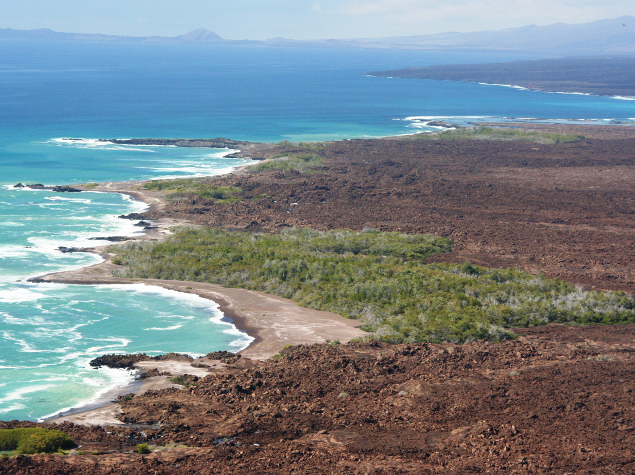
Current mangrove finch habitat © F. Cunninghame
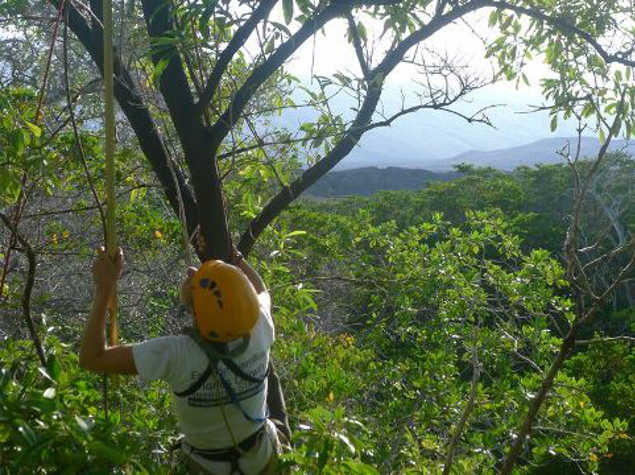
Climber approaches nest for collection © G. loh
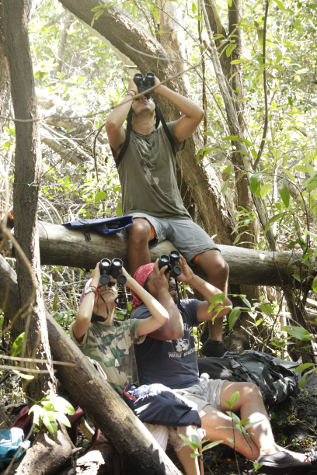
Nest watch © B Wendelin
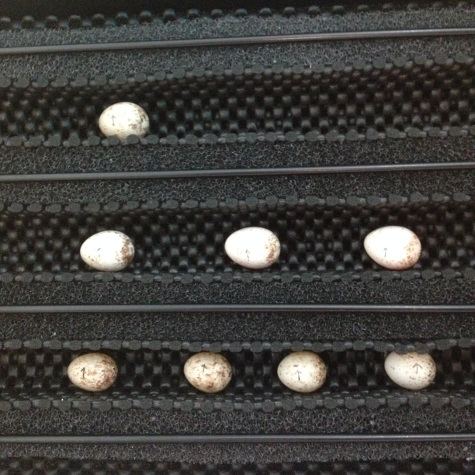
Mangrove finch eggs in incubator © B. Parks
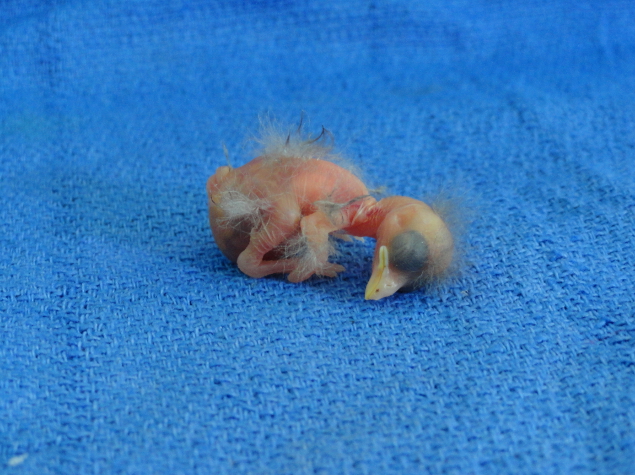
Recently hatched mangrove finch chick in captivity © B. Parks
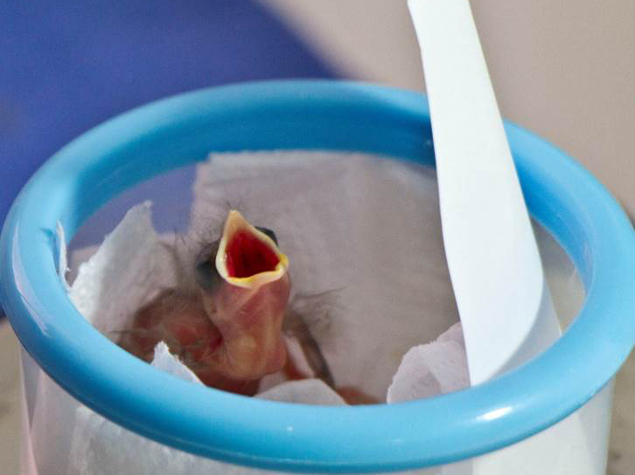
Chick being reared in captivity © Juan Carlos Avila

Feeding mangrove finch © Liza Diaz Lalova
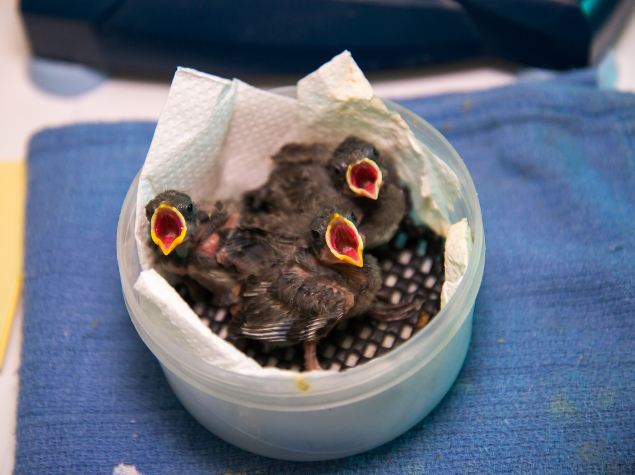
Mangrovefinch chicks prior to fledging in captivity © Tui De Roy
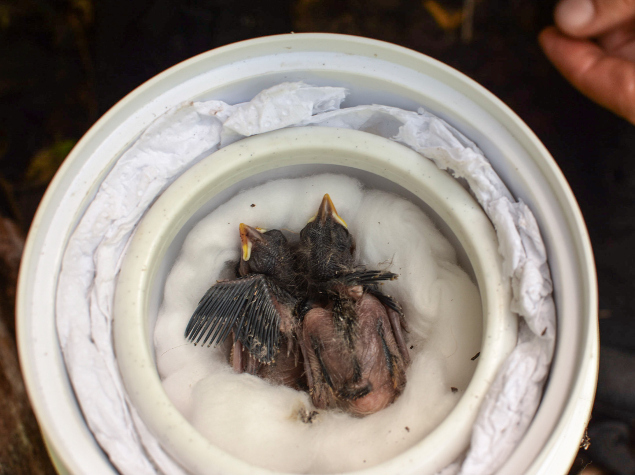
Mangrove finches © Juan Manuel García
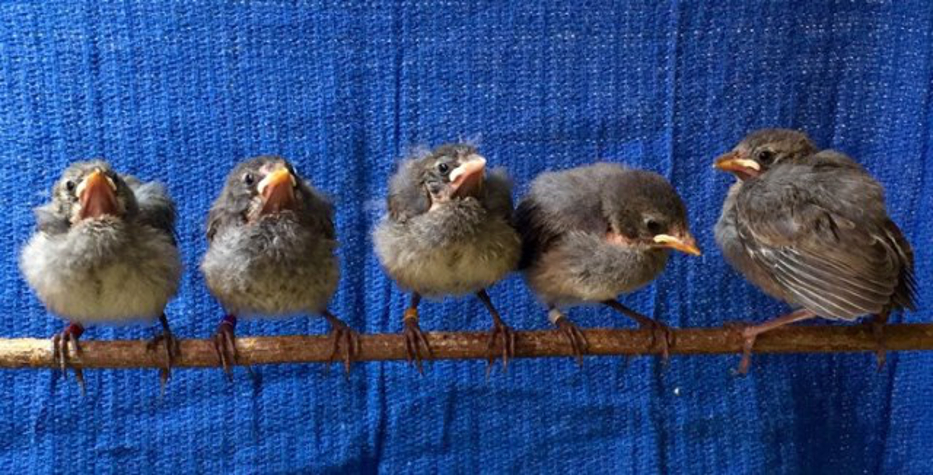
Hand reared fledglings © B. Parkes
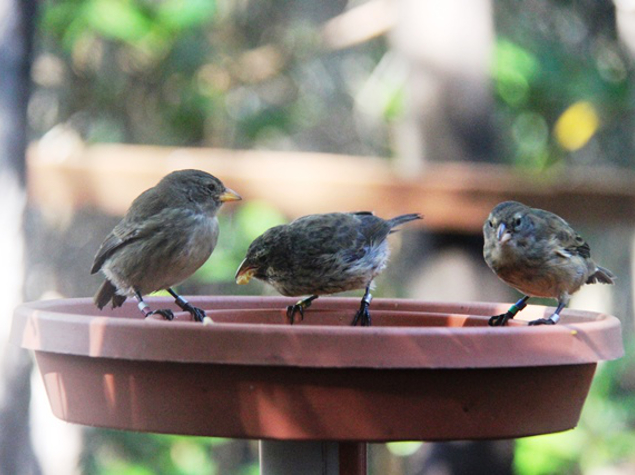
Supplementary feeding post-release © F Cunninghame
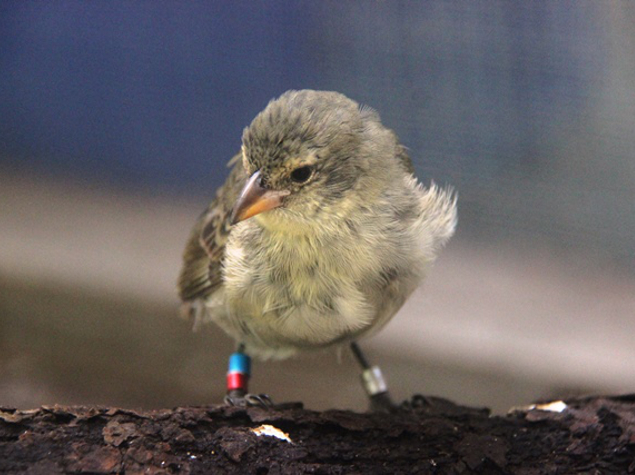
Post release © F. Cunninghame
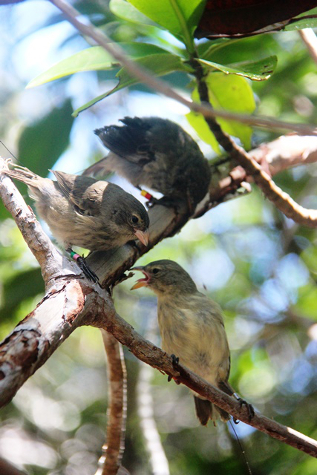
Hand reared fledglings post release forraging © F. Cunninghame

Mangrove finch © Juan Manuel García
Post release mangrove finch radio tracking on lava field © F. Cunninghame
